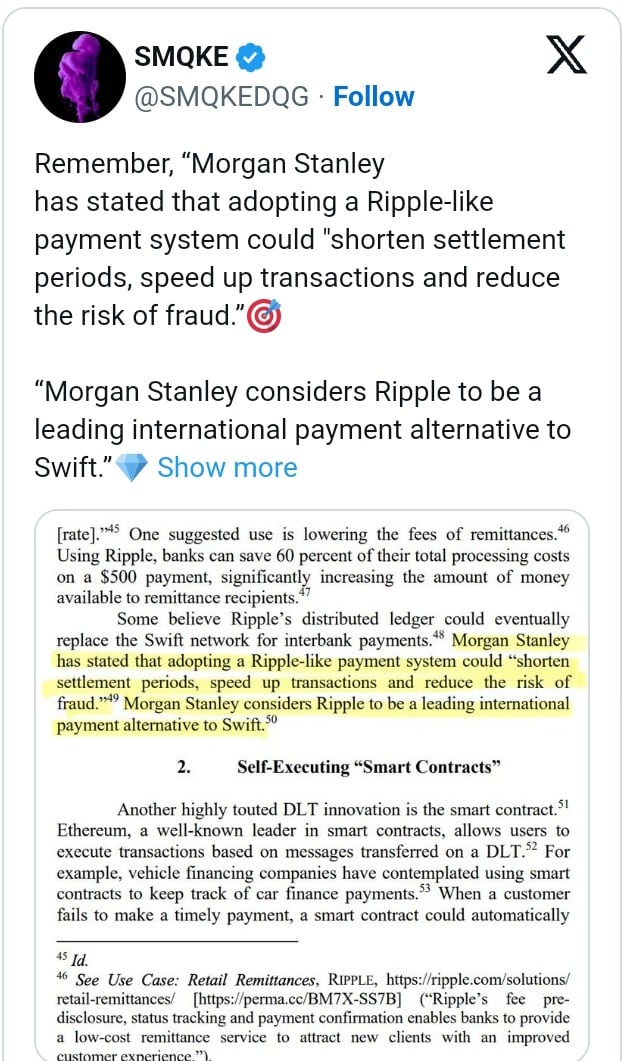- A recent academic research has referenced Morgan Stanley’s statement on the role of Ripple in reducing the settlement period in cross-border payments while increasing transaction speed.
- JPMorgan has also highlighted in the past that Ripple, SWIFT, and the CLS Group are significantly addressing the challenges of cross-border payments.
The role of Ripple (XRP) and its effort in redefining global payment has been acknowledged by investment banking heavyweight Morgan Stanley, describing it as an alternative to SWIFT. According to reports, Morgan’s statement on XRP was made in a document titled “Blockchain in Banking: Disruptive Threat or Tool?”.
Reviewing a portion of Boston University’s academic document on the Review of Banking & Financial Law, shared by a crypto researcher, SMQKE, we found that banks that adopt Ripple could save about 60% of their total processing costs on a $500 payment. The document also cited a statement from Morgan Stanley, highlighting that “adopting a Ripple-like payment system could significantly reduce settlement times, while reducing the risk of fraud and speeding up transactions.”

Apart from Morgan Stanley, Ripple has also earned a notable mention in research reports of major institutions, with a recent one coming from JPMorgan.
JPMorgan’s Position on Ripple (XRP)
JPMorgan believes that private entities like Ripple, SWIFT, and the CLS Group have made several jaw-dropping initiatives and groundbreaking moves to address the challenges of cross-border payments, specifically, settlement and delays. The bank also identified an annual loss of $120 billion from inefficiencies in the cross-border payments. Meanwhile, multinational corporations are reported to move about $23.5 trillion annually.
According to JPMorgan, Ripple uses a real-time cross-border payment infrastructure that utilises XRP for settlement. Meanwhile, it cited the volatile nature of the token as a limitation to banks’ adoption.
High volatility of XRP leads to limited willingness from banks to use it to facilitate payments. We are yet to see a scalable and seamless solution that can work across countries, currencies, and payment systems.
Prior to this report, the US Federal Reserve had also disclosed in a document that it could integrate the Ripple network to boost its FedNow payment system. As detailed in our previous blog post, Ripple was reported to have ties with the Fed alongside 26 other certified service providers.
As also highlighted in our earlier discussion, an analyst identified as “All Things XRP” believes that Ripple seeks to solidify its name by dominating payment, launching its stablecoin rails, and making XRP the default bridge.
Amidst the backdrop of this, XRP is slowly climbing up the price curve as it currently trades at $2.2 after printing 3% gains on the daily chart. In the last 30 days, the asset has also surged by 13%, with the trading volume rising by a staggering 123% to $4.84 billion. According to our recent analysis, the asset has shown strength to stage a bullish reversal to $15.



